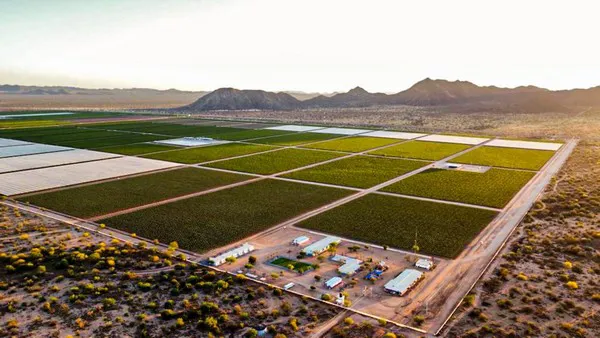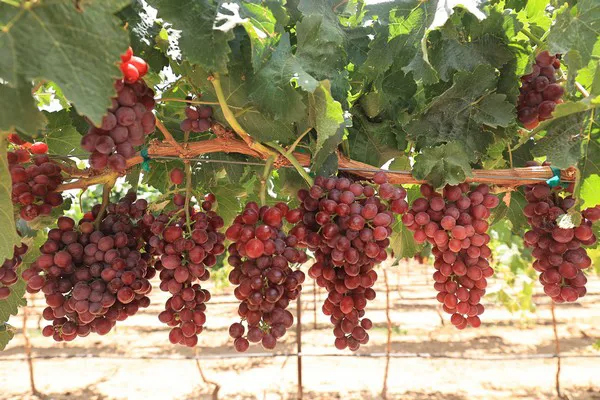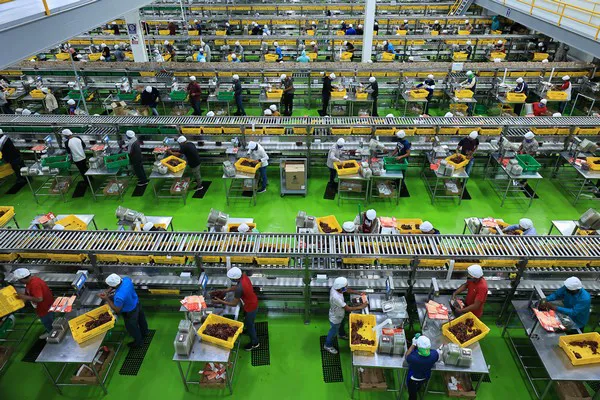 North America is eagerly waiting for Mexico’s Sonora region to kick off table grape harvest. With Chile, Peru and South Africa having finished early, the pipeline is empty. “On top of this, Sonora is starting late,” says Carlos Bon with Divine Flavor. Last year saw a late start, but this year will be even more delayed with a production gap as a result. A gap that Bon hasn’t seen before. “I’ve seen a gap on green grapes before, but never on reds,” he shared. A gap on red grapes will be a first this year. “It could arguably be the latest start on record.”
North America is eagerly waiting for Mexico’s Sonora region to kick off table grape harvest. With Chile, Peru and South Africa having finished early, the pipeline is empty. “On top of this, Sonora is starting late,” says Carlos Bon with Divine Flavor. Last year saw a late start, but this year will be even more delayed with a production gap as a result. A gap that Bon hasn’t seen before. “I’ve seen a gap on green grapes before, but never on reds,” he shared. A gap on red grapes will be a first this year. “It could arguably be the latest start on record.”
A gap like this makes for a difficult start of the Sonoran season. “The gap puts a lot of pressure on us to get started and it will be key to communicate with our customers,” commented Bon. “We take our name seriously and for us, quality is non-negotiable. It would be unfair to our customers to pack grapes that don’t eat well, and we want consumers to come back for repeat purchases.” By next week, grapes in Sonora’s first growing region, Guaymas, are expected to be at maturity and harvest will start. From there, production will expand into the Hermosillo area with Pesqueira kicking off around May 24. The third growing region to start harvest will be the coastal area west of Hermosillo and the Mexican grape deal will finish with Caborca in the northern part of Sonora.
 Aerial view of one of the company's grape ranches in Mexico's state of Sonora.
Aerial view of one of the company's grape ranches in Mexico's state of Sonora.
Pressure
While the pressure is on for the early part of the grape deal, Bon also expects tension during the late part of Sonora’s grape season. The reason is that California has been going through a similar cooler weather pattern. Temperatures at night and during early mornings have been below normal levels. As a result, the San Joaquin Valley is not expected to have significant grape volumes until the later part of July.
“This will put pressure on us to extend our season as long as possible,” shared Bon. On a positive note, Divine Flavor has a strong late grape deal. “In recent years, we’ve expanded production in Caborca, Mexico’s latest grape growing region and the season won’t wrap up until mid-July.” Grapes will be available in stores until the end of July.
Better quality due to cold weather
While timing is a concern for this season, quality isn’t. Driven by colder weather, the quality of the grapes is expected to be better than last year. “When it’s colder, grapes don’t mature, but they keep growing in size,” said Bon. Flames usually break color at size 11/16, but this year they kept growing for a longer period and didn’t break color until size 12/16 or 13/16. Divine Flavor’s production volume is expected to be slightly higher compared to last year. “With the support of our customers, we’ve been able to grow tremendously and estimate to harvest 7.3 million boxes out of Sonora this season, which would represent one-third of the state’s total grape deal.”

Jalisco expansion
While Sonora is Mexico’s largest grape growing region by far, table grape harvest for Divine Flavor already started late March further south in Jalisco. “This is our third year growing in Jalisco, but our first real year in terms of volume,” commented Bon. “We’ve started growing grapes in Jalisco to cover a production gap and we supply grapes to our retail partners that have committed to us and believed in us along the way.” Nevertheless, it is incredibly difficult to establish a grape operation in Jalisco. “If my uncle Alan Aguirre wasn’t the most passionate farmer on the planet, we wouldn’t have been able to achieve this success,” he shared. “Jalisco is a very unique area, and it takes years of experience to run a successful grape operation.” It is expected that this year’s Jalisco grape volume was about 25 percent of what it will be in a few years as more vines will come into production for Divine Flavor.
Central packing shed
From packing in the field, Divine Flavor made the transition to packing all grapes in central packing sheds about four years ago. These sheds are centrally located in each growing region. “Packing in one central location has been a big differentiator for us as it has allowed us to provide our customers with tailored packaging options,” said Bon. “We’re able to offer them more flexibility when it comes to specialty packs, private label, etc.” In addition, packing indoors is beneficial from a food safety perspective as spiders, rodents, etc. aren’t able to make their way into the boxes. “However, the biggest advantage for us has been better quality control. In the past, it was difficult to check the quality of grapes that spanned 1,500 acres. Now, packing has been funneled on half an acre.”
 Grapes are packed in a central packing shed.
Grapes are packed in a central packing shed. For more information:
For more information:
Michael DuPuis
Divine Flavor
Tel: +1 (520) 281-8328
mdupuis@divineflavor.com
www.divineflavor.com
